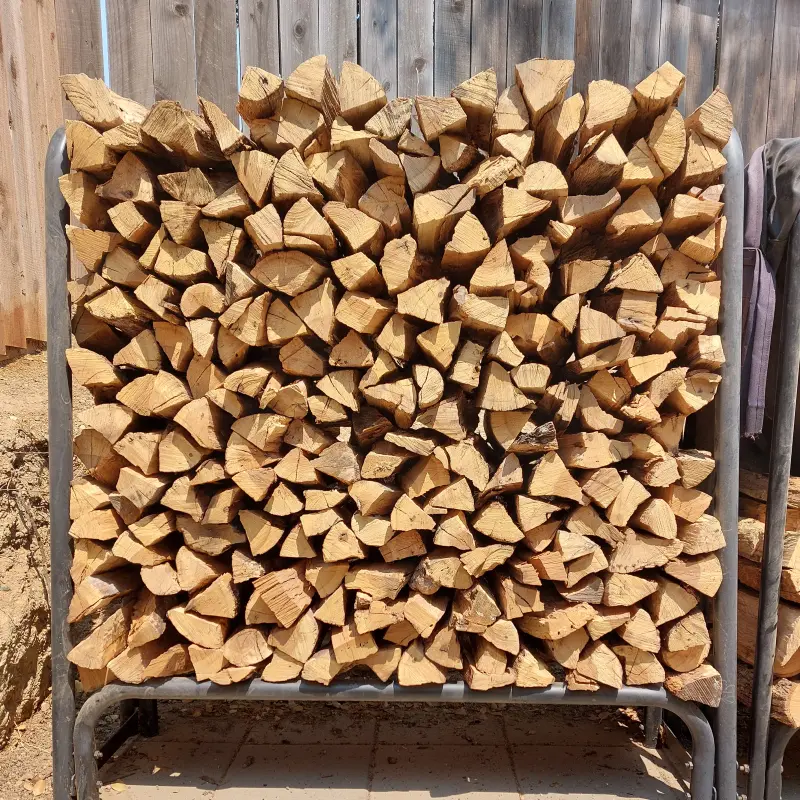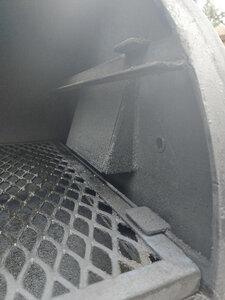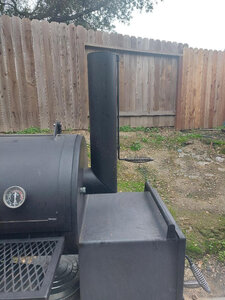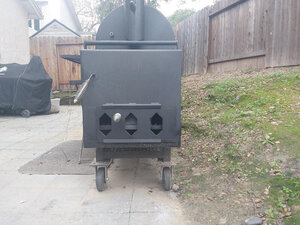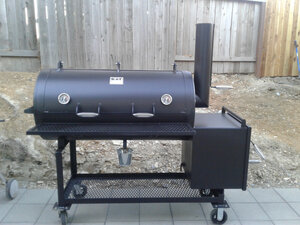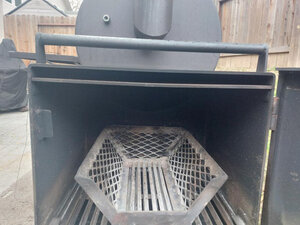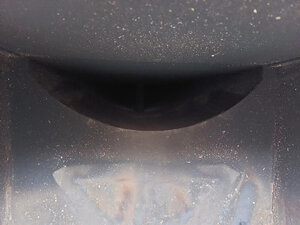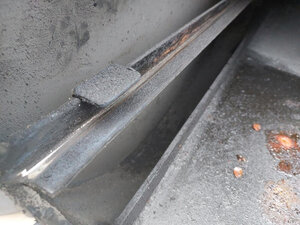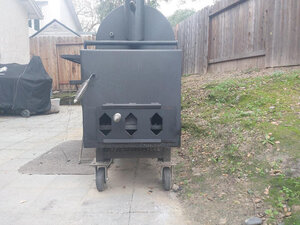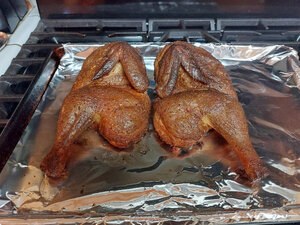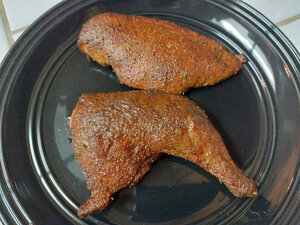Ok, so this isn't really about a smoker build, but more so about a mod trying to fix a couple issues with an existing reverse flow offset smoker. If this is not the right area I apologize and please feel free to move where most appropriate.
I have a 24x48 reverse flow smoker that I was very happy with, until I started trying to cook chicken and found it was putting soot on my food. While it didn't give an off-puting taste, the skin had a greyish color that just looked gross. I have now finally solved that problem, but in the process of sorting that out I realized there were a couple other problems. The soot on the food ended up being caused by too big a fire, which was needed to get the temp up in the 300 degree range that I like to cook chicken at. The solution was start with 1 and ONLY 1 chimney of lump, and use thinner splits, adding a new split more often. This kept the fire to a smaller, slower fire which gave me the nice golden brown skin color I was after.
Now that the soot on food issue is solved, the remaining issues are that it is VERY difficult to get and maintain temps in the 300 - 325 range, and I am having to add a new split every 15 minutes which doesn't seem right. Splits are white oak, and generally 16" length and between 2"-4" diameter. I also have issues sometimes with splits that are a little more dense (but still seasoned) not wanting to burn and I'm thinking better airflow would also solve this problem potentially as I already preheat my splits.
In another thread I posted that inside the cook chamber, there is a "hood" over the entrance to the smoke stack (picture below). I have become convinced this is my problem, but I am no expert, so I turn to you guys who know more than I do for help.
The builder said the cooker is not designed to cook with the stack full open etc. and is designed to cook with more convective heat. But to me, it seems he has designed it in a way to FORCE you to limit the stack opening by shutting it down at the stack entrance, when the same thing could be accomplished by shutting down the stack damper at the other end. The builder has agreed to cut the hood off, but before I go and have him do that I want to make sure my thinking is correct, so I have the following questions.
1. If the stack is fully opened up which I would think should increase air flow, will that help to get the higher temps I'm after?
2. Will that have any effect on efficiency, as far as how often I need to add a split? I feel like the current 15 minute intervals are because it is working really hard to overcome the airflow issue, resulting in needing to feed it more often. Am I wrong on this?
I'm hoping this is the answer to my problems as I'm so frustrated that I'm ready to get rid of this pit and buy a traditional flow offset, like the Workhorse 1975, although I don't want to do that if I don't have to.
Pic of hood over stack entrance:

Pic of wood rack so you can see diameter of splits:

I have a 24x48 reverse flow smoker that I was very happy with, until I started trying to cook chicken and found it was putting soot on my food. While it didn't give an off-puting taste, the skin had a greyish color that just looked gross. I have now finally solved that problem, but in the process of sorting that out I realized there were a couple other problems. The soot on the food ended up being caused by too big a fire, which was needed to get the temp up in the 300 degree range that I like to cook chicken at. The solution was start with 1 and ONLY 1 chimney of lump, and use thinner splits, adding a new split more often. This kept the fire to a smaller, slower fire which gave me the nice golden brown skin color I was after.
Now that the soot on food issue is solved, the remaining issues are that it is VERY difficult to get and maintain temps in the 300 - 325 range, and I am having to add a new split every 15 minutes which doesn't seem right. Splits are white oak, and generally 16" length and between 2"-4" diameter. I also have issues sometimes with splits that are a little more dense (but still seasoned) not wanting to burn and I'm thinking better airflow would also solve this problem potentially as I already preheat my splits.
In another thread I posted that inside the cook chamber, there is a "hood" over the entrance to the smoke stack (picture below). I have become convinced this is my problem, but I am no expert, so I turn to you guys who know more than I do for help.
The builder said the cooker is not designed to cook with the stack full open etc. and is designed to cook with more convective heat. But to me, it seems he has designed it in a way to FORCE you to limit the stack opening by shutting it down at the stack entrance, when the same thing could be accomplished by shutting down the stack damper at the other end. The builder has agreed to cut the hood off, but before I go and have him do that I want to make sure my thinking is correct, so I have the following questions.
1. If the stack is fully opened up which I would think should increase air flow, will that help to get the higher temps I'm after?
2. Will that have any effect on efficiency, as far as how often I need to add a split? I feel like the current 15 minute intervals are because it is working really hard to overcome the airflow issue, resulting in needing to feed it more often. Am I wrong on this?
I'm hoping this is the answer to my problems as I'm so frustrated that I'm ready to get rid of this pit and buy a traditional flow offset, like the Workhorse 1975, although I don't want to do that if I don't have to.
Pic of hood over stack entrance:
Pic of wood rack so you can see diameter of splits:
